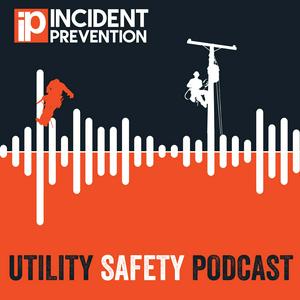Utility Safety Podcast - Visual Intelligence for a Safer Grid: The Future of Utility Inspections
In this episode, Incident Prevention’s Kate Wade sits down with Kaitlyn Albertoli, co-founder and CEO of California-based Buzz Solutions, to explore how visual intelligence is helping utilities uncover hidden risks and modernize critical infrastructure. Kaitlyn shares how Buzz Solutions’ platforms—PowerAI and PowerGuard—use AI-driven insights to streamline inspections, enhance grid reliability, and reduce operational costs. They also discuss the challenges of adopting new technologies, bridging the field-office communication gap, and what utility safety professionals can expect in the next 5 to 10 years. This conversation is essential for those interested in data-driven decision-making, infrastructure safety, and the future of AI in the energy sector.
To reach Kaitlyn directly, email her at
[email protected] or connect via LinkedIn: www.linkedin.com/in/kaitlyn-claire-albertoli/
Key Takeaways:
Buzz Solutions uses AI-powered visual intelligence to help utilities identify risks and improve inspection accuracy.
Their platform PowerAI analyzes images from drones, helicopters, and field crews to prioritize maintenance and reduce operational costs.
Integration with GIS and asset management systems makes implementation efficient and less disruptive.
Buzz’s tools support storm prep, wildfire mitigation, and long-term grid modernization.
Education and communication are key to AI adoption across all levels of a utility organization.
Questions & Answers
Q1: What problem does Buzz Solutions aim to solve for utilities?
A: Buzz helps utilities manage and analyze vast visual datasets, allowing them to spot infrastructure issues early, prioritize repairs, and eliminate data silos.
Q2: How does PowerAI differ from general AI tools?
A: PowerAI is a purpose-built platform that uses machine learning for visual inspection analysis, making it highly specific to the utility industry’s unique needs.
Q3: What concerns do utilities have about AI adoption?
A: Many worry AI could replace jobs or be unreliable, but Buzz focuses on “visual intelligence” to support—not replace—field experts and improve safety decisions.
Q4: Can this technology help prevent wildfires or major outages?
A: Yes, by analyzing infrastructure degradation and identifying high-risk components early, utilities can proactively address threats before they escalate.
Q5: How can utilities ensure smooth adoption of Buzz’s solutions?
A: Success hinges on integrating into existing workflows, gaining buy-in from field users, and automating data flow into GIS and asset management systems.
Subscribe to Incident Prevention Magazine - https://incident-prevention.com/subscribe-now/
Register for the iP Utility Safety Conference & Expo - https://utilitysafetyconference.com/
#UtilitySafety #VisualIntelligence #GridModernization #AIinUtilities #UtilitySafetyPodcast #InfrastructureInnovation
________________________________
This podcast is sponsored by T&D Powerskills. If you are looking for a comprehensive lineworker training solution, visit tdpowerskills.com today and use the exclusive podcast listener promo code IP2025 to receive a 5% discount!

